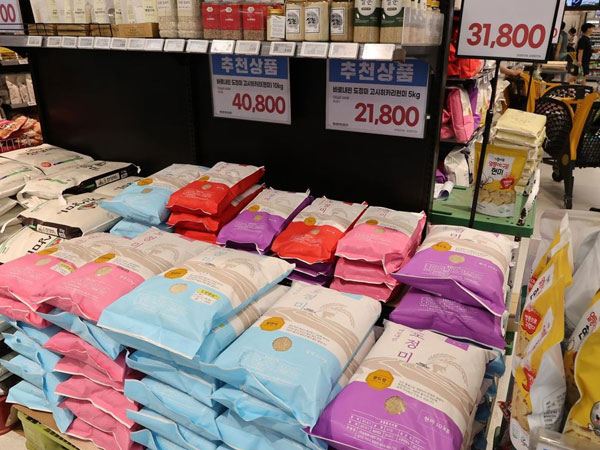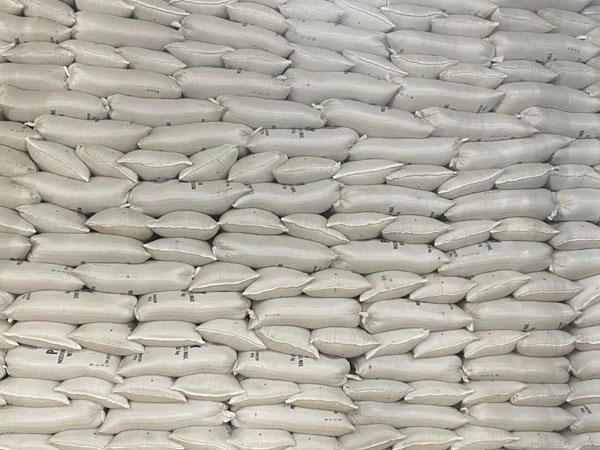 Farmers keen on gov’t policy measures
Farmers keen on gov’t policy measures
Rice prices in Korea are rising as domestic production is hit hard by extreme weather conditions.
The increases are raising concerns among consumers who are already struggling with higher prices across a wide range of food products and at local restaurants.
According to NongNet, an online agricultural produce information platform run by the Korea Agro-Fisheries & Food Trade Corp., the official retail price of a 20-kilogram bag of rice reached 60,112 won ($43.42) on Thursday. It was the first time this year the price surpassed 60,000 won.
The figure has jumped 14 percent from the previous year, and is 16 percent higher compare to last year's average price.
The price hike is attributable to low supply.
Local wholesalers, which purchase rice directly from domestic producers, bought smaller volumes than last year, according to the Center for Agricultural Outlook under the Korea Rural Economic Institute (KREI). The agency said that from January to April, these wholesalers purchased a total of 157,000 tons, down 16,000 tons from the same period last year.
The low supply is visible in volumes of stocks nationwide as well, according to KREI. As of April, the country's rice reserve stood at 712,000 tons, which is 210,000 tons lower than the previous year. Among them, the National Agricultural Cooperative Federation had a stock of 635,000 tons at the same time, down 20.4 percent from previous year, and the privately stored volume stood at 77,000 tons, down 39.6 percent from previous year.
What drove the low production and supply are the country's extreme climate conditions. According to the Ministry of Agriculture, Food and Rural Affairs, heavy rainfall earlier this month flooded 25,065 hectares of local paddy fields — 3.6 percent of the nation’s entire rice production sites. South Chungcheong Province sustained the largest hit with over 16,000 hectares submerged.
Extreme climate conditions have fueled outbreaks of brown planthoppers and other insects harmful to rice production. Last year, when extreme heat lasted longer than expected until September, the pest infestation continued throughout the season, with swarms appearing in unusually large numbers and significantly damaging crop yields.
Amid the unstable rice production, the National Assembly’s Agriculture, Food, Rural Affairs, Oceans, and Fisheries Committee on Thursday passed a revision to the Grain Management Act. Lawmakers agreed on stabilizing the nation’s rice price whenever the domestic rice production is in either shortage or excess via the government’s more systematic intervention.
Farmers are currently keen on how the law will develop, especially how it will eventually support them when they suffer business losses. The revised law also supports farmers who turn from rice farming to other natural produce that are easier to grow in tropical conditions because of the country’s climate conditions becoming hotter and longer.
"The core of the revised Grain Management Act, with its detailed clauses to come, is how to introduce a guideline to prevent extreme price hike or fall for domestic rice," the National Rice Producers Association said. "As to tropical natural produce farming, the selection of natural produce for the government to support should be based on farmers' choices, not the authority."














© Copyright 2025 The SSResource Media.
All rights reserved.